I find that more and more I want to connect to the essence of a place and express that through generating adaptive ecosystems, creating vibrant, healthy places full of life, with natural resilience and adaptability. A large part of the cycle of life is death and in an ecosystem that meads deadwood.
If we want healthy ecosystems – whether that’s in the country, our garden or in an urban park, we need dead and decaying wood as a part of that cycle. Deadwood is home to so many saproxylic insects and fungi that live on, under or in wood for the whole or part of their lifecycle; these are also a source of food for other birds, insects and small mammals. Yet this is a rarely seen element in our manicured environments for we tend to see decay as a negative thing.
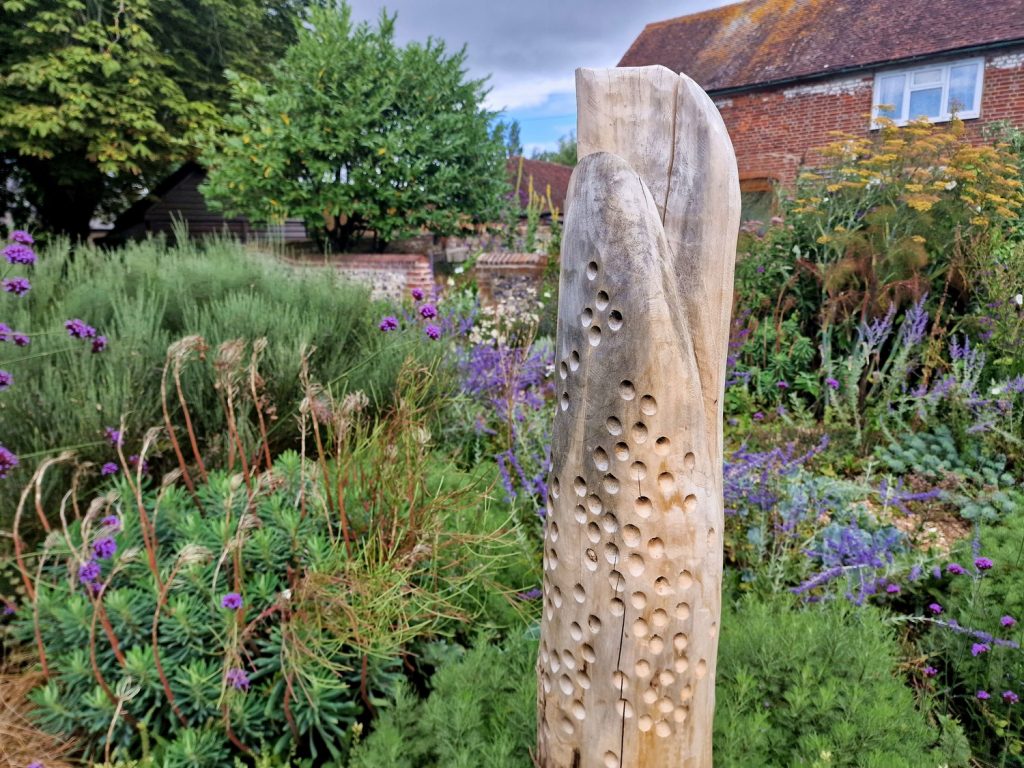
The way I work with this is concept is what I call Deadwood Art – literally making habitat but in an artistic manner. Standing deadwood is a vital and unique habitat, often missing even from natural environments (coppice woods, for example, seldom see trees large enough to mature and die). We do like to tidy so, even in the countryside and of course, there’s always the woodstove (I have one).
Standing deadwood is different from fallen deadwood; it is drier and hosts what are often early colonisers of wood. A dead tree will go through a range of fungal species, each succeeding the other (often with unseen violence). Many insects are also dependent upon deadwood, notably beetles (staghorn being the most well known) but also solitary bees, when positioned in sunnier areas. In larger wood pieces, birds and bats will make a home, given the right height, nooks and crannies.
I’ve been carving medium-sized pieces of sweet chestnut, which comes from local coppice woods, which is supposed to be my source of firewood. Any wood will do but hardwoods and native or adaptive species are preferable and will certainly last longer than softwoods. Having said that, if you have deadwood in the garden, an old snag or tall stump, it can be artistically enhanced.
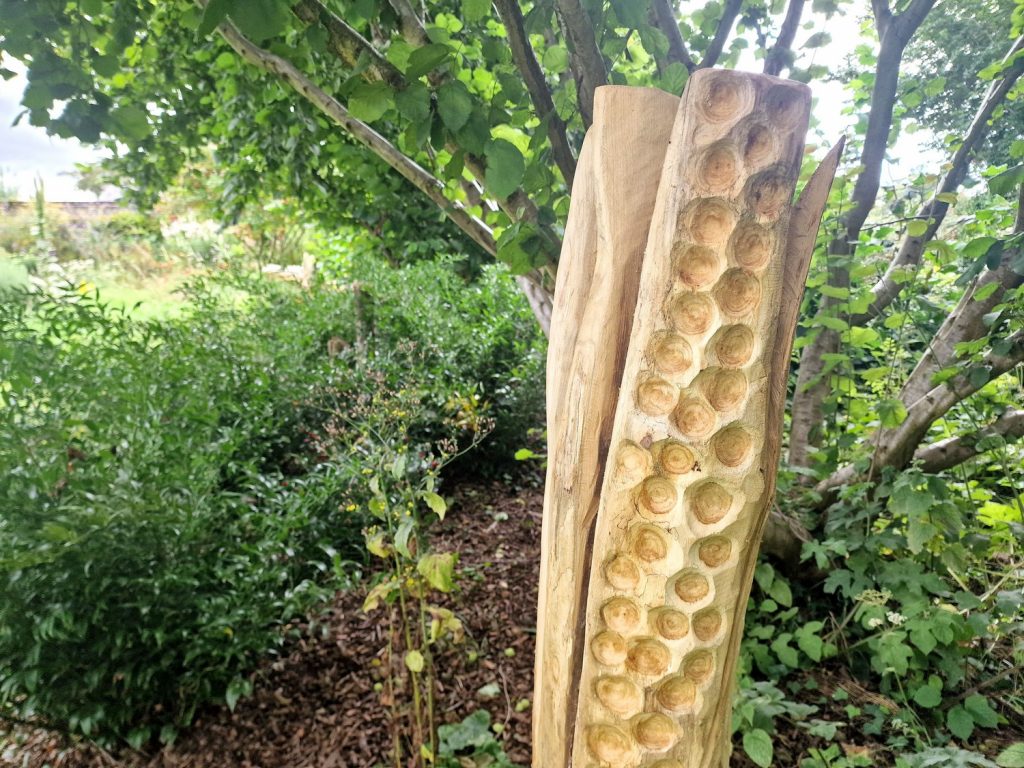
I see these pieces working closely in conjunction with my concepts of a woodland edge garden (see my previous post in the menu). As such plantings are effectively ornamental coppice gardens, they may not get to the stage of producing old wood – or not for many years. Installing a piece or pieces of deadwood art provides the missing habitat and this can be tailored (to some extent) to suit or attract specific insects or birds and bats. For the latter, these may have to be large scale, to get them to the right height above ground.
For me, this wood sculpting is not about carving bears, eagles, gnomes or greenmen – I get a little sick of those. This is abstract, allowing the wood to speak and emphasising whatever is there in the grain. It is about the ecological function balanced with the visual appeal.
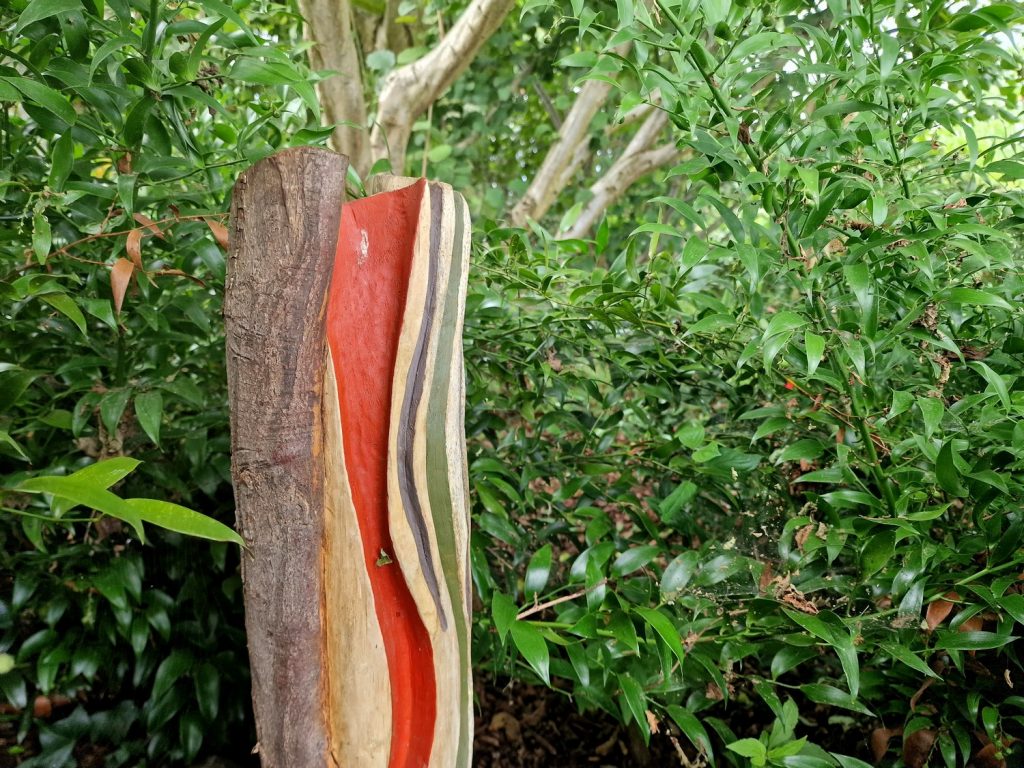
I am also interested in creating larger pieces by combining a number of trunks together to form ‘hollow’ snags, replicating ancient tree stumps. There was an interesting article in the Arboricultural Journal, Vol 42 Issue 4, December 2020 on the lack of suitable standing deadwood in woodlands and how we might create them from other deadwood, much in the way I’m thinking (though without the art bit). My point is, there is validity in this approach creating enhanced habitat. Of course, the wildlife doesn’t need the art, but in gardens or certain public spaces, perhaps we humans do. At least I hope we can appreciate it and its double function.
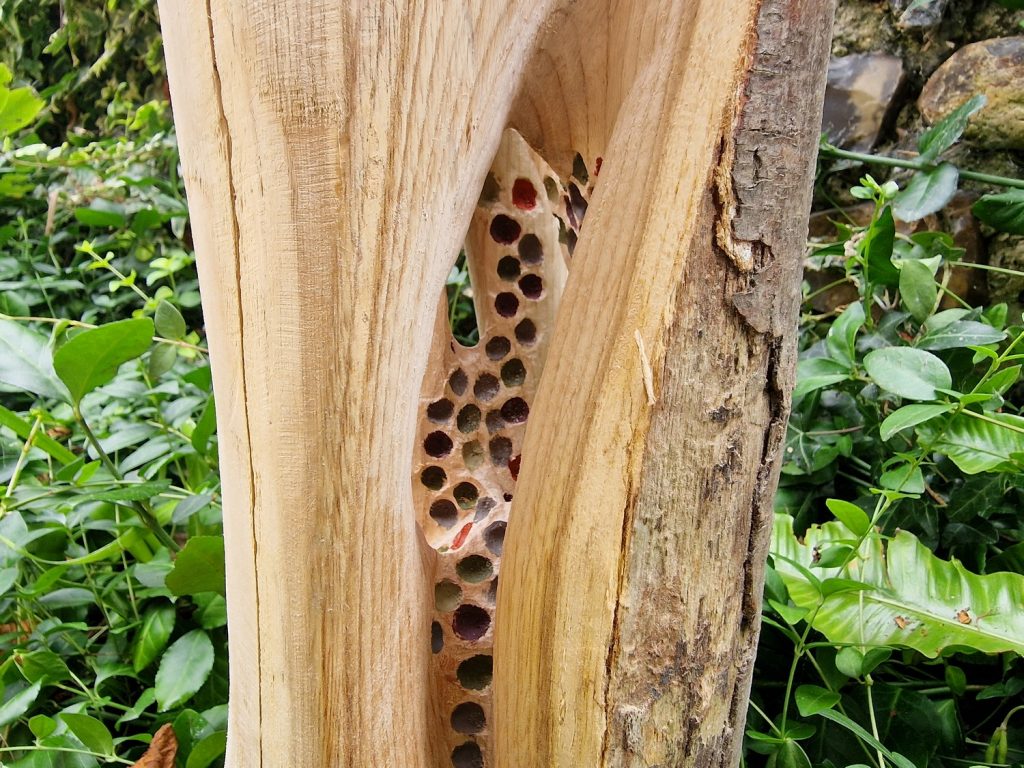
My tools of choice are all electric and I actually charge my tool batteries via a solar panel, minimising energy use and noise at home or on site.
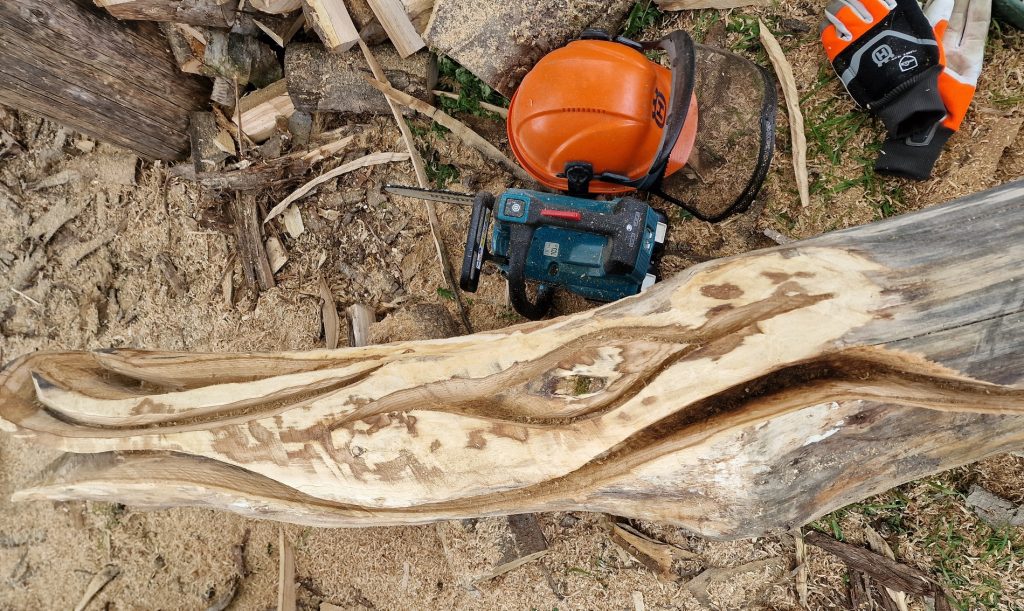
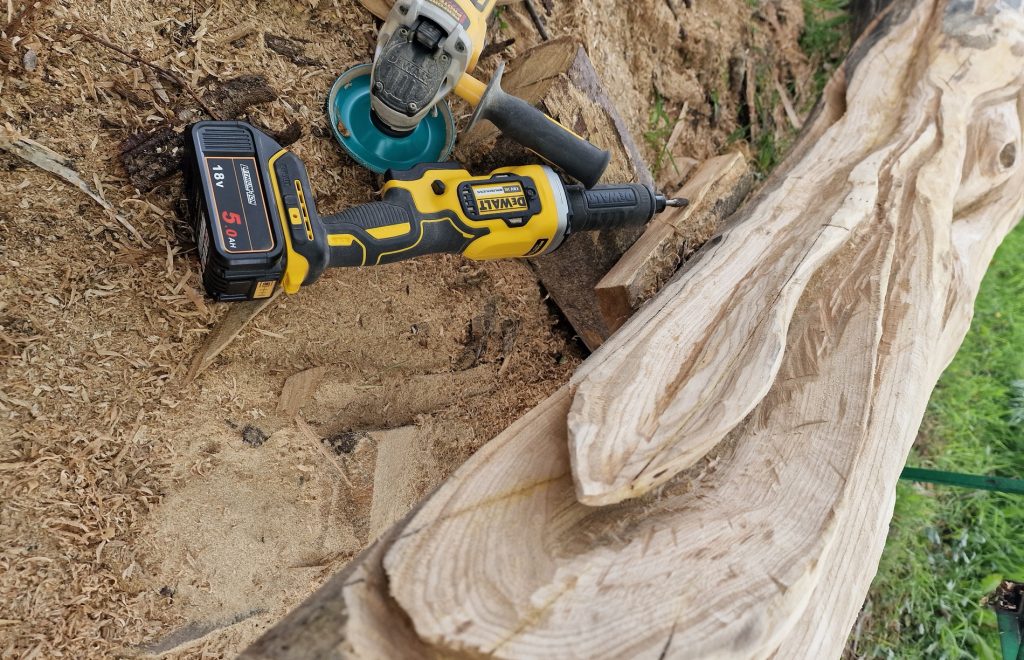
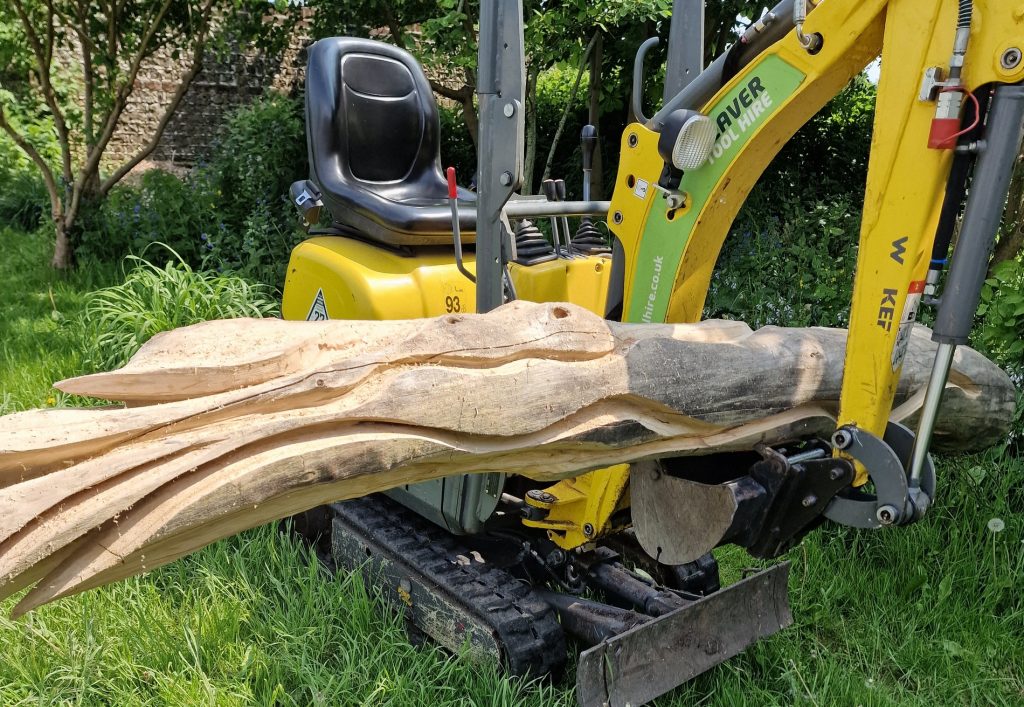
This is a new thing for me, a tentative offering to create occasional deadwood art for others. My real job (in case you don’t know) is designing and consulting on gardens and trees which I do here in the UK but also in the Middle-East. I started working life as an arborist, and whilst I have no desire (or ability) now to climb trees, I love working with wood and I’d be interested to talk to anyone who might want an installation in Southern UK. I can carve smaller pieces here for delivery and installation, or carve existing wood on site. All for discussion – and I’d love your feedback in any case!
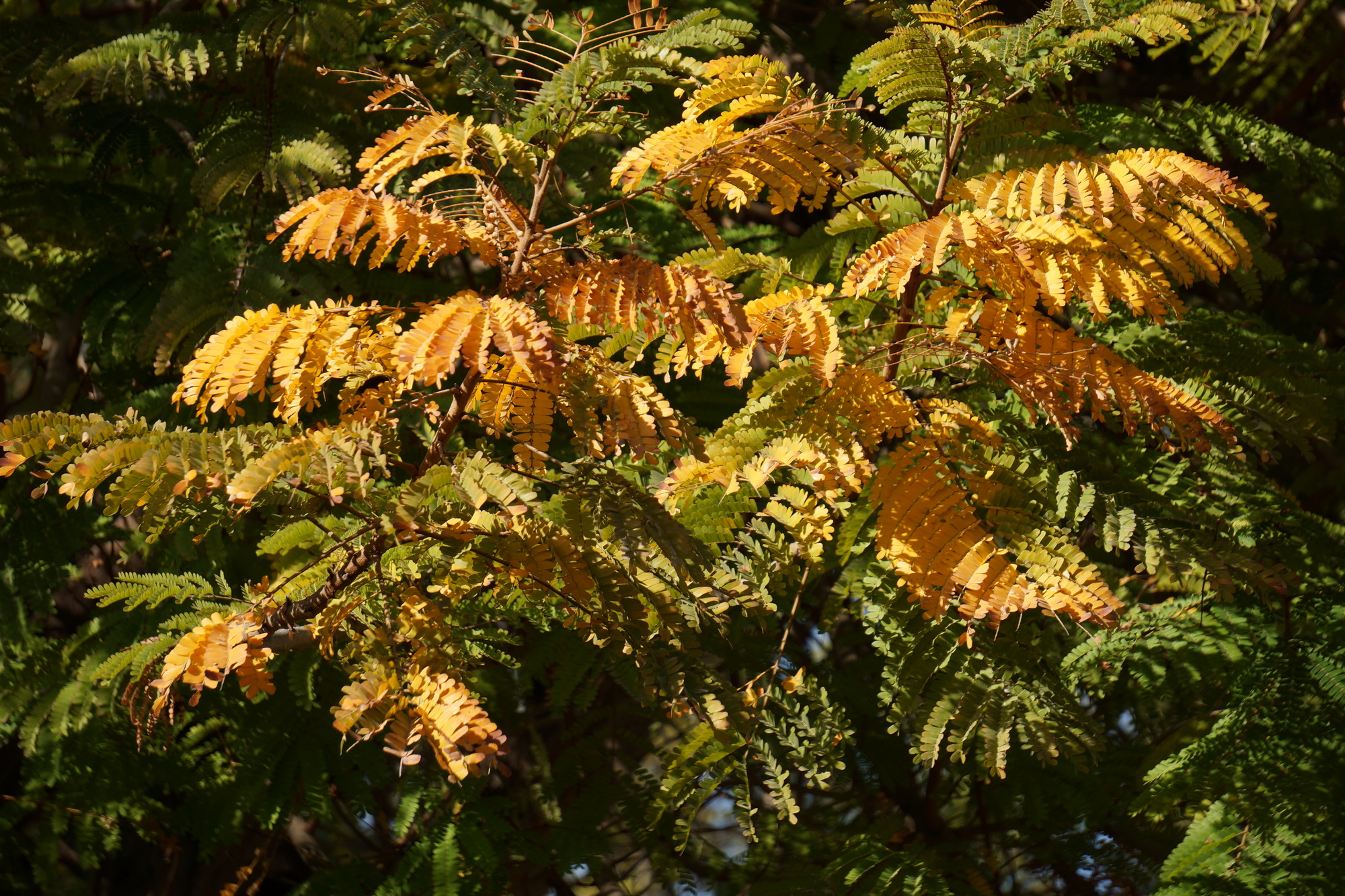
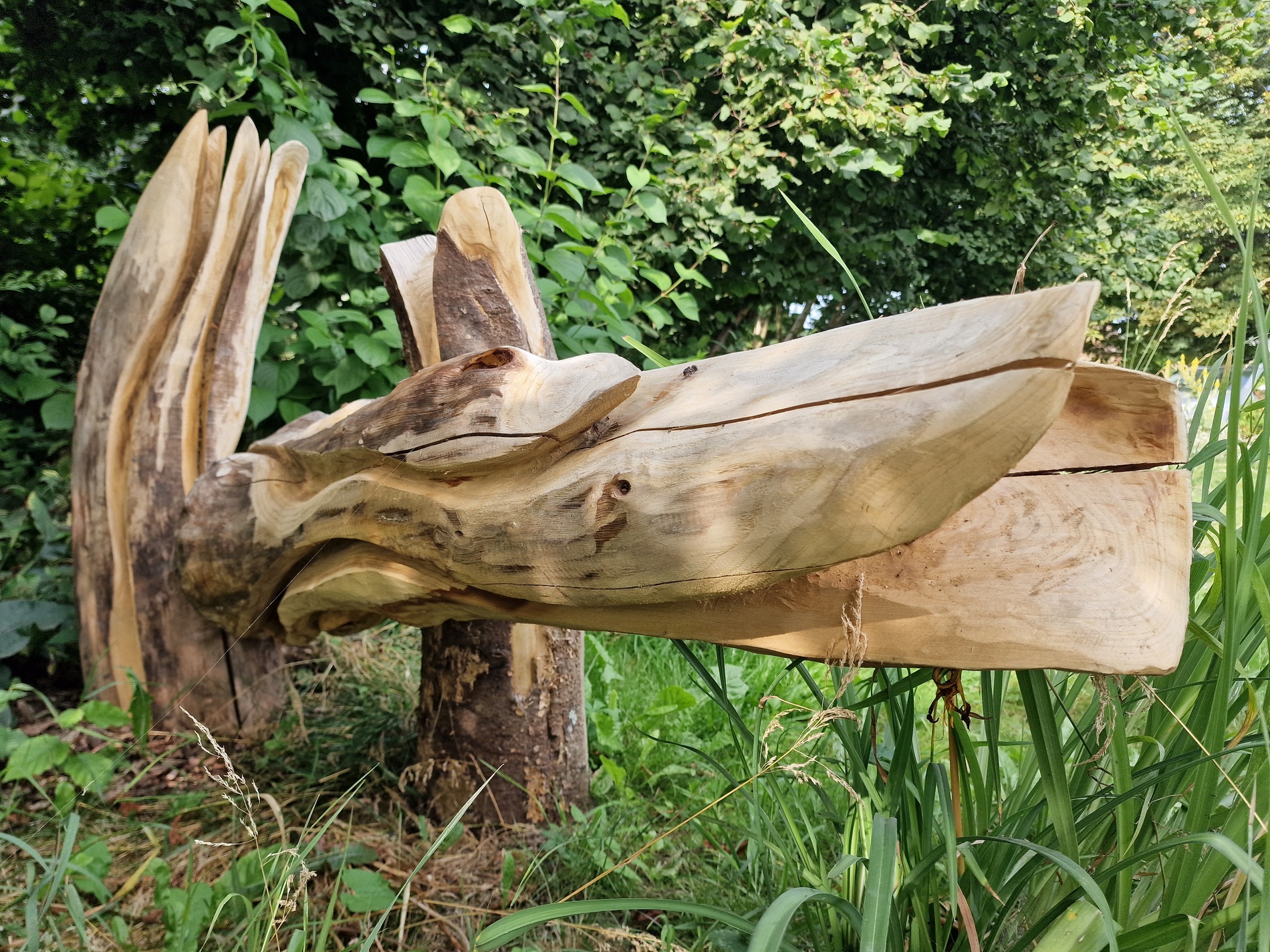
This is beautiful Mark, and covers Nature’s needs whilst understanding human psychology.
Thank you Jennifer, that’s what I’m hoping to do!
Love this idea. Check out The White Oak Project at Royal Botanic Gardens Victoria, Melbourne Australia. Hoping to use Deadwood art in a Biodiversity Border at Wellington Botanic Garden, Aotearoa New Zealand, where I work. I grew up in Littlehampton, not far from you
Thank you Kate, hope you get to do some, and it’s a small world!